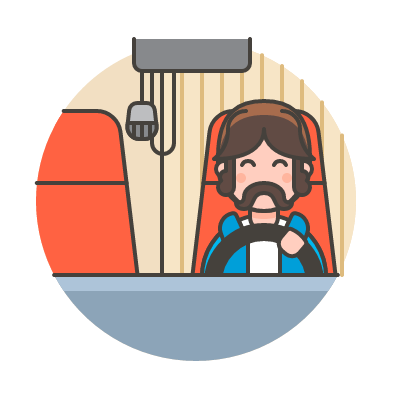Free Canadian Air Brake Practice Test – Prepare for Your Knowledge Exam
Master Canadian Air Brake Test
👉 Subscribe to our YouTube channel for step-by-step videos on driving tips, knowledge test prep, and real-world Canadian driving scenarios.
Frequently Asked Questions – Canadian Air Brake Knowledge Test
The Air Brake Knowledge Test is a written exam required for drivers seeking the air brake (Q) endorsement on their commercial or heavy vehicle licence. It tests your understanding of air brake system components, inspections, and safe operation.
Anyone operating a commercial vehicle equipped with air brakes (such as a bus, tractor-trailer, or heavy-duty truck) must pass the air brake test and obtain a Q endorsement, regardless of class.
The number of questions varies slightly by province but typically ranges from 25 to 50 multiple-choice questions. You must usually score 80% or higher to pass.
Topics include:
Air brake components and their functions
Daily inspections and leak tests
Safe driving and braking techniques
Emergency procedures
System failure signs
Moisture, freezing, and maintenance
While the core content is similar, each province may have different formats, manuals, or requirements. Always study the official air brake manual from your province or territory.
Yes, in many provinces (like Ontario and Alberta), you must complete a practical air brake inspection test in addition to the written exam. This includes a hands-on pre-trip inspection of the braking system.
Yes! All of our air brake practice tests are completely free and based on provincial manuals. They’re designed to help you study smarter and pass the real exam with confidence.
Study your province’s official air brake manual
Watch our YouTube videos
Take multiple practice tests
Learn to identify each air brake component and its function
Practice explaining the inspection steps out loud
If you fail, you’ll need to wait a specified period (usually 1–7 days, depending on your province) before retaking the test. There may also be a small re-testing fee.
Yes, the air brake endorsement (Q) can expire with your driver’s licence. You must renew it according to your province’s licensing schedule and may need to retake the test if your licence lapses for too long.
Tailored Learning for Your Air Brake Endorsement Success
Air Brake System Components
Understanding air brake parts and how they function is essential to passing the test—and driving safely.
🔧 Key Components:
Compressor – Pumps air into the brake system.
Air Tanks – Store compressed air for brake use.
Brake Chambers – Convert air pressure into mechanical force.
Slack Adjusters – Maintain correct brake adjustment.
Governor – Controls when the compressor cuts in and out.
Safety Valve – Prevents excessive pressure build-up.
✅ Test Tip:
Know the purpose and operation of each major part. Diagrams help! Free Air Brake Endorsement Practice Test


Daily Inspections & Leak Tests
Before driving, you must inspect and test your air brake system.
🛠️ Daily Inspection Essentials:
Check air tanks for moisture and drain them.
Look for air leaks, worn hoses, or damaged fittings.
Test low-air warning devices and spring brakes.
🧪 Leak Test Steps:
Charge the system fully.
Turn off the engine and release brakes.
Watch for pressure drops—know the maximum loss allowed.
✅ Test Tip:
You’ll need to know the procedure and acceptable loss rates (e.g., 3 psi for straight trucks).Free Air Brake Endorsement Practice Test
Brake System Failures & Safety Protocols
Understanding what to do when something goes wrong is critical for safety—and test success.
🚨 Common Issues:
Low Air Pressure: Activates warning and spring brakes.
Brake Fade: Caused by overheating on long downhill drives.
Stuck Valves or Chambers: May lead to brake drag or failure.
✅ Test Tip:
Know what causes brake fade and how to avoid it (e.g., gear down, brake intermittently).
Study by topic or take full-length mock tests. All questions are based on official provincial air brake manuals.
🌐 Explore more at CanadianDriverKnowledgeTest.ca
📺 Watch our tutorials: Canadian Driver Knowledge Test


Air Pressure Monitoring & Gauges
Reading your air pressure gauges properly helps you avoid dangerous situations and stay compliant with the law.
🕹️ What You Need to Monitor:
Primary and Secondary Gauges – Show pressure in each system.
Governor Cut-In/Cut-Out – Typically 85–100 psi (cut-in) and 100–135 psi (cut-out).
Warning Systems – Buzzers, lights, or flags alert at ~60 psi.
✅ Test Tip:
Know the required PSI ranges and when to expect alarms or automatic brake applications. Free Air Brake Endorsement Practice Test
Spring Brakes & Emergency Braking
Spring brakes automatically engage when air pressure drops too low—they’re your last line of defense.
🧲 Spring Brake Basics:
Activated by mechanical spring force, not air pressure.
Used for parking and emergency braking.
Engage automatically at 60 psi or lower if air loss occurs.
✅ Test Tip:
Don’t confuse spring brakes with service brakes—understand both systems and their roles.


Dual Air Brake System Function
Most modern commercial vehicles use a dual air brake system for safety and redundancy.
⚙️ Dual System Features:
Two separate circuits (usually front and rear).
If one system fails, the other can still provide limited braking.
Each system has its own reservoir and warning light.
✅ Test Tip:
Understand how the two systems interact—and what happens if one fails. Free Air Brake Endorsement Practice Test
Manual vs. Automatic Slack Adjusters
Slack adjusters keep brake pushrods at proper length, but they must be checked.
🔩 Manual Adjusters:
Require regular checks and manual adjustment.
Too loose = delayed braking; too tight = brake drag.
⚙️ Automatic Adjusters:
Self-adjusting, but must still be tested during pre-trip.
✅ Test Tip:
You must know how to check pushrod stroke and when an adjuster is out of spec.


Safe Driving Techniques with Air Brakes
Proper braking technique can prevent dangerous overheating and brake failure.
🚛 Air Brake-Specific Habits:
Use snub braking (apply, release, repeat) on long descents.
Avoid riding the brakes—it causes heat buildup.
Downshift early when approaching hills or slowing down.
✅ Test Tip:
“Brake fade” questions are common—always link heat and friction loss.
Dealing with Moisture & Freezing
Water in the system can freeze in cold weather, leading to failure.
❄️ Moisture Control Tips:
Drain tanks daily, especially in winter.
Use alcohol evaporators or air dryers to reduce moisture.
Watch for slow or uneven brake response in freezing temps.
✅ Test Tip:
You may be asked what happens if air lines freeze—or how to prevent it.


Preparing for the Practical Air Brake Test
Some provinces (like Ontario) require a hands-on practical air brake test in addition to the written one.
🧪 What’s Tested:
Full air system check
Governor cut-in and cut-out test
Low air warning device test
Spring brake application
Leak and applied pressure tests
✅ Test Tip:
Practice your pre-trip air brake check until it’s automatic. Examiners want precision and confidence.

